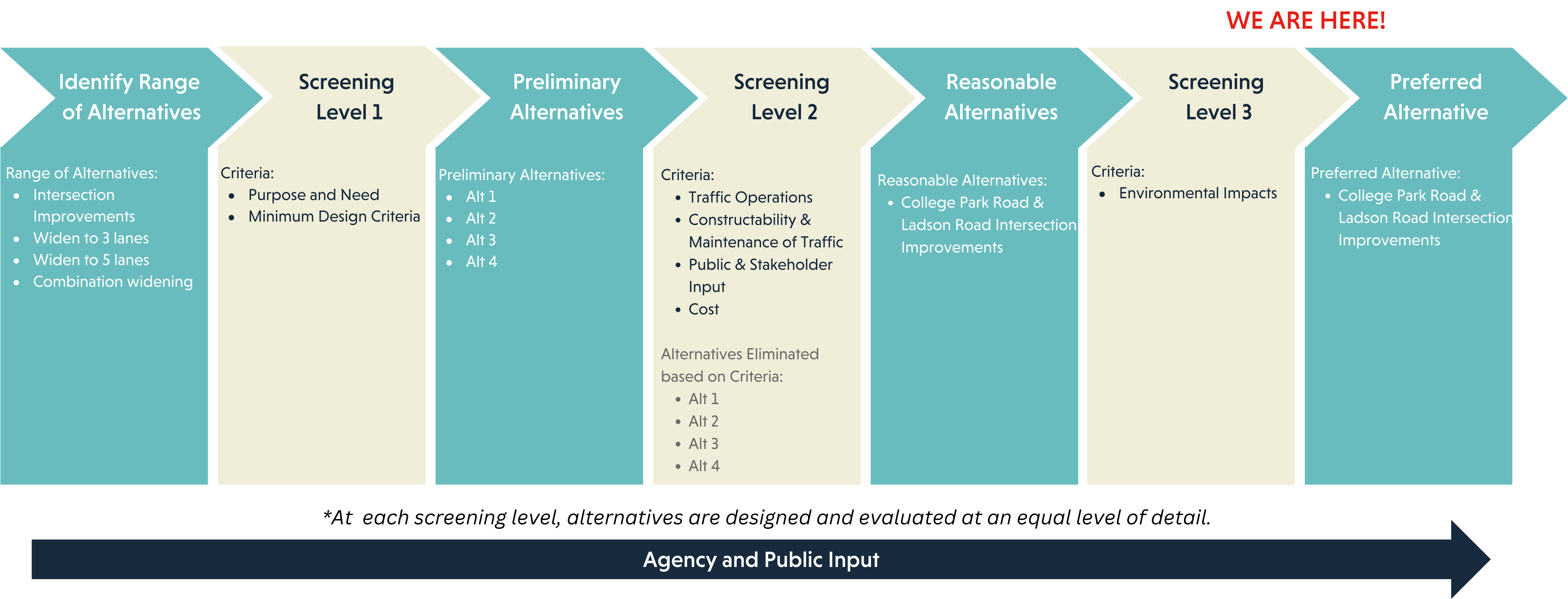Preliminary Alternatives were funneled through Screening Level 2, which evaluated each alternative based on the following criteria:
Alternatives that pass Screening Level 2 are considered Reasonable Alternatives.
 View Graphic
View Graphic View Graphic
View GraphicThe Project Team completed a Traffic Study that analyzed the existing and future conditions for the no-build and the build alternatives. This study looked at Level of Service at intersections along the corridor and segments of Hwy 78. When comparing the Level of Service (LOS) between a three-lane section (consisting of two travel lanes and a two-way center turn lane) from Berlin G. Myers to the Fairgrounds (Alternative 2) and a five-lane section (with four travel lanes and a two-way center turn lane) in the same area (Alternatives 3 and 4), the three-lane section exhibits better performance and experiences less decline in the later year (2049) as analyzed in the traffic study. While a five-lane section would offer additional capacity, it also is shown to attract more traffic to the corridor for users from the Summerville area to access I-26 and points east.
 View Graphic
View GraphicAlternatives were presented at a Public Meeting on May 8, 2024. There was a total of 135 attendees. Comments predominantly agreed changes need to be made within the project area. A few concerns raised across the majority of submitted comments include:
 View Graphic
View Graphic